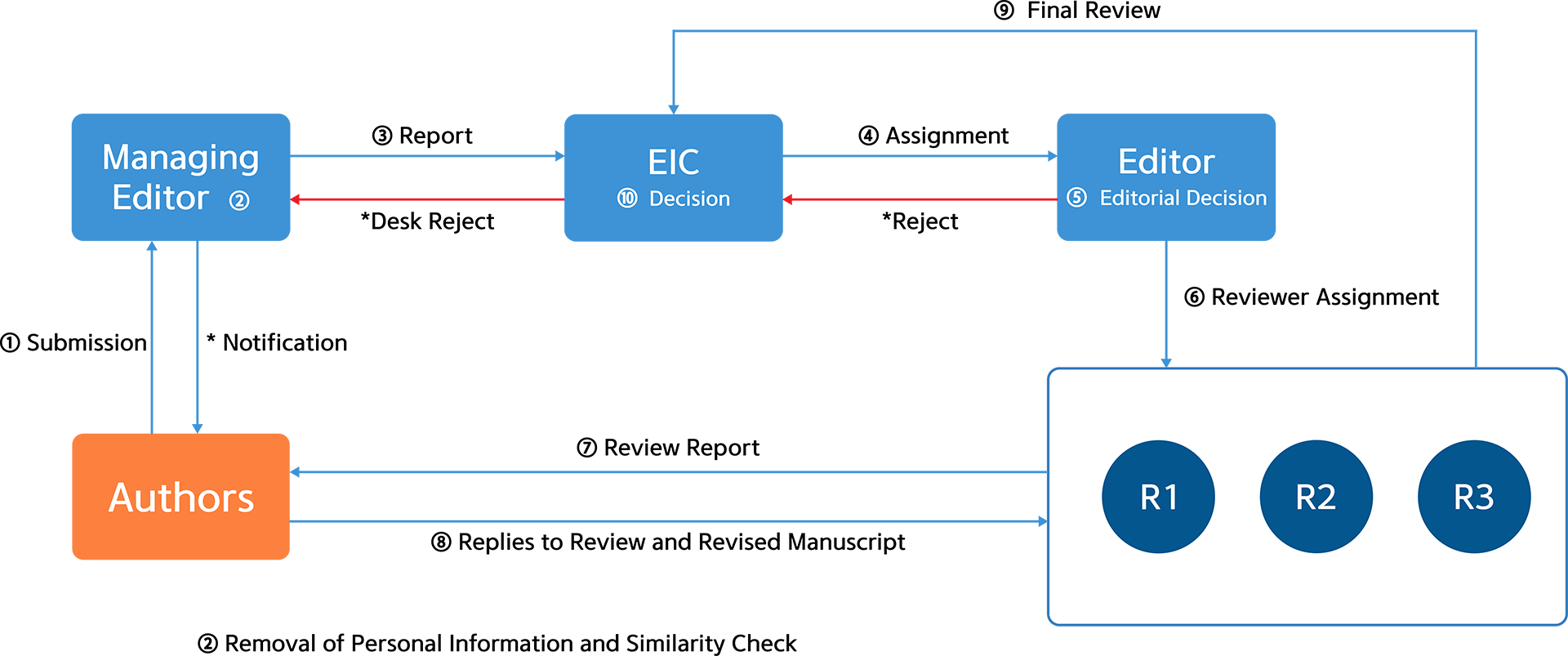- EAER>
- For Authors>
- Review Process
Review Process
All Papers are subject to peer review. As the journal operates a double-blind review process, any indication of the authors’ identities are removed from the manuscript.

< EAER Double-blind Peer-review Process >
- Manuscripts submitted to EAER are checked for plagiarism or duplicate publication with Crossref Similarity Check and preliminarily reviewed by a member of the Editorial Board in accordance with the aims and scope of the journal. Once the manuscript is accepted for review, it is sent to three referees for evaluation.
- (First-round Review) The referees are requested to evaluate the manuscript based on relevance, significance, research method, originality, and so on. A referee may recommend to “accept” a paper as it is, or to accept after “minor revision,” “major revision,” or to “reject” the paper. Manuscripts with two decisions of “reject” will not be considered further.
- The reviewed manuscript with comments and suggestions is returned to the corresponding author with a request to respond to the referees’ reviews, accompanied by a revised draft of the manuscript, within two weeks.
- (Second-round Review) Based on the responses and revised paper submitted by the authors, the final decision on the acceptance of the manuscript is made by referees who did not recommend for rejection during the first-round review.
If there are conflicting decisions between referees, the Editor-in-Chief has the full right to decide whether the manuscript will be published in the journal.
The peer-review process takes approximately 8-12 weeks.

- Process for the Identification of and Dealing with Allegations of Research Misconduct
When the journal faces suspected cases of research and publication misconduct such as a redundant (duplicate) publication, plagiarism, fabricated data, changes in authorship, undisclosed conflicts of interest, an ethical problem discovered with the submitted manuscript, a reviewer who has appropriated an author’s idea or data, complaints against editors, and other issues, the resolving process will follow the Code of Ethics for EAER and the flowchart provided by the COPE. The EAER editorial board will discuss the suspected cases and reach a decision.
- Ensuring Content Integrity
CrossMark is a multi-publisher initiative from Crossref to provide a standard way for readers to locate the current version of a piece of content. By applying the CrossMark logo, EAER is committing to maintaining the content it publishes and to alerting readers to changes if and when they occur. Clicking on the CrossMark logo will tell you the current status of a document and may also give you additional publication record information about the document.


